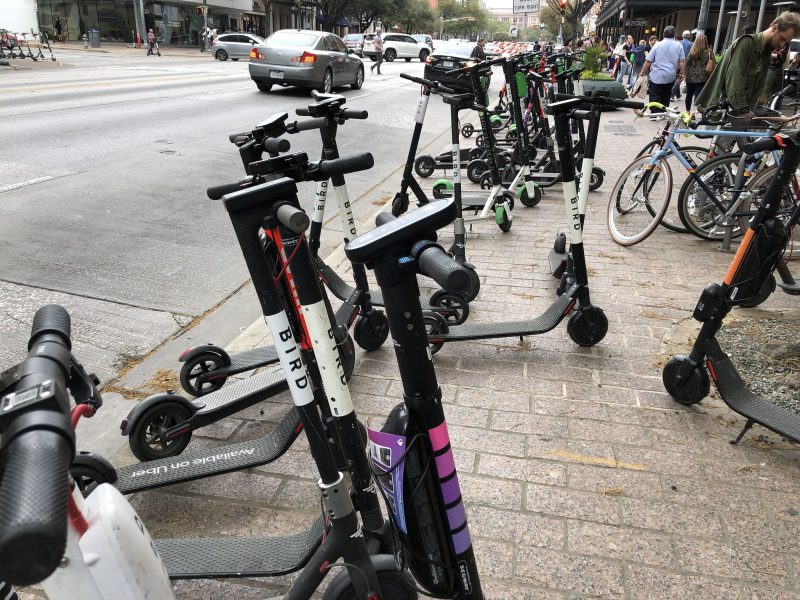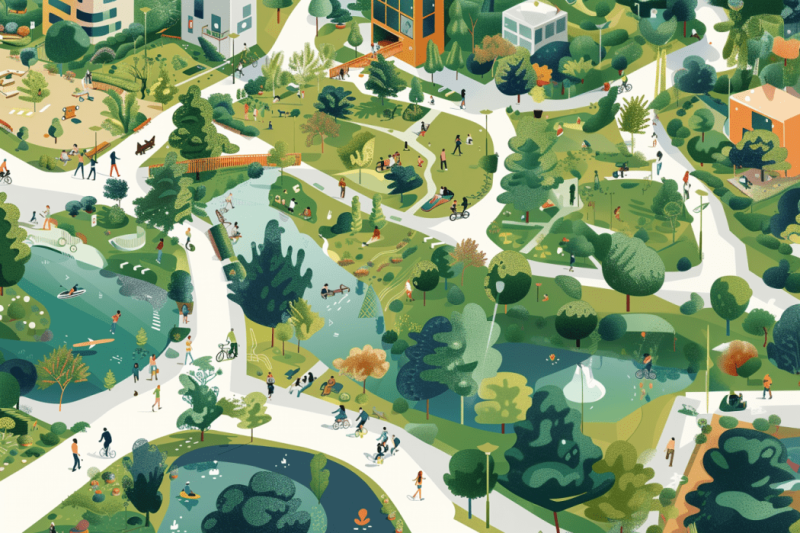User Research meets Ecosystem Design: The Case for UX Design in Mobility Strategy

At Empatic UX, we help organizations grow through creating human-centered customer experiences. This is a balance of business strategy, user research and UX design. And it often starts with something like this:
- “It took me 30 minutes just to figure out which buttons to press to unlock the carshare. In the end, it took me longer than the bike ride would have. And did I mention that it rained on me the whole time?”
- “Once the app had crashed for the third time, I decided to just dodge the fare. I didn’t care anymore!”
- “As a field technician, it’s very important that I can find the broken device quickly. But with our current app I’m often stranded in the parking lot, searching for an hour before I can even start fixing the thing.”
These are not imaginary examples, but real quotes from customers of mobility companies in Austria who we interviewed while conducting user research into smart mobility products and services.
Of course, it can be painful to hear this kind of feedback from your own customers. It’s a hassle and it can be unpleasant. However, not listening to your customers, users, or employees is a mistake – one that has real business impact. Only by knowing how your users feel about a product or service can you develop a product that suits their needs, and grow your company in the process. That is why all human-centered design starts with user research.
UX Design: Putting People First
In human-centered and UX design, the most important principle is empathy for the person using a service or product. This requires stepping into the users’, customers’, or employees’ shoes and walking around in them for a while. It means assessing all the great new technologies out there — predictive maintenance, artificial intelligence, generative design, mobility as a service — in terms of their interaction with the needs of real people. And it involves observing and talking to any and every stakeholder connected to your business.
At Empatic, we do this everyday and have two key recommendations for implementing user research into your day-to-day business:
First set a regular appointment for user testing and talking to customers. Maybe start with once a month – every first Wednesday of the month is your new user testing and interviewing day!
Second, have the relevant decision makers sit in on these interviews from time to time. Sending out a summary – or even sharing video recordings – will not have the same effect. Everybody should be able to see the product testing and findings with their own eyes.
Changes in the development process take time – but a customer-centric design with regular feedback loops offers numerous advantages. We at Empatic UX are happy to support you in this change!
Ecosystem Design Thinking: Consider Every Stakeholder
Here is a classic example of a “last mile” problem. While e-scooters are a key part of many smart mobility strategies, the storage of the scooters while not in use remains a challenge. This is a prime example of the as-yet insufficient collaboration in the mobility sector.

In fact, mobility is a super complex system with many players. What we recommend to our partners in this space is to take a step back and consider the situation through the lens of business ecosystem design. We usually start by creating an ecosystem map like this one:

On this map we can see who the potential ecosystem partners are, what roles they hold, what skills they bring, and how to handle potential competition. This enables us to more easily assess the needs of all stakeholders and sets the foundation for the rest of the design process.
UX Design & Cultural Change: Silo Thinking & Corporate Processes
One last point to consider when maximizing the potential for UX design in smart mobility is how organizational change can facilitate a more human-centered approach. Companies that build products and services around real people experience less frustration and ultimately generate less waste on the planet.
Research ops is one way to integrate a more human-centered approach in your organization. It enables the collection and flow of information about your stakeholders throughout your organization. We have recently had success establishing research ops at a company already familiar with the UX tool kit — this next step allowed us to tailor the development process to the most important needs and be driven by real people.
However, we do realize that many of the companies we work with are not yet ready for this level of integration. Human-centered design is more an attitude than a strict methodology, and staff are often a little biased towards existing systems and the way things currently are.
To successfully shift the attitude in an organization, teams require an internal or external pioneer – someone who works on a project with them and inspires them to put the magic of agile, human-centered design thinking into action.
While changing attitudes is usually not our main focus when working with clients on a project, it frequently becomes a secondary benefit. It only takes one team to see the potential of human-centered design before a whole organization starts to incorporate this new point-of-view.
Conclusion: Steps to Smart Mobility Strategy
In summary, there are 3 main hurdles – or opportunities – that we see to the broad adoption of user-centered design practices in the mobility sector:
- Human-centered design means that we build products and services around real people. Implementing user research is key for developing empathy for our customers.
- In addition to our direct customers and users, there are many other players in the ecosystem that we should consider. Ecosystem design, and participation in these ecosystems, opens up new growth opportunities for us as a company, allowing us to become more meaningful to customers.
- To make this happen, a cultural shift is needed within individual companies. Every employee in every department should be inspired to work in a human-centered way, eventually becoming an ambassador for the approach.
We hope you found this article illuminating or perhaps even inspiring for incorporating UX design, user research and human-centered methods into your own teams and workflows, whether you work in smart mobility or not.
This is an edited version of a talk Josef Mayerhofer, CEO & Business Designer at Empatic, gave at the Mobility Days conference in Vienna in December, 2021.
You can find the complete talk on YouTube.


